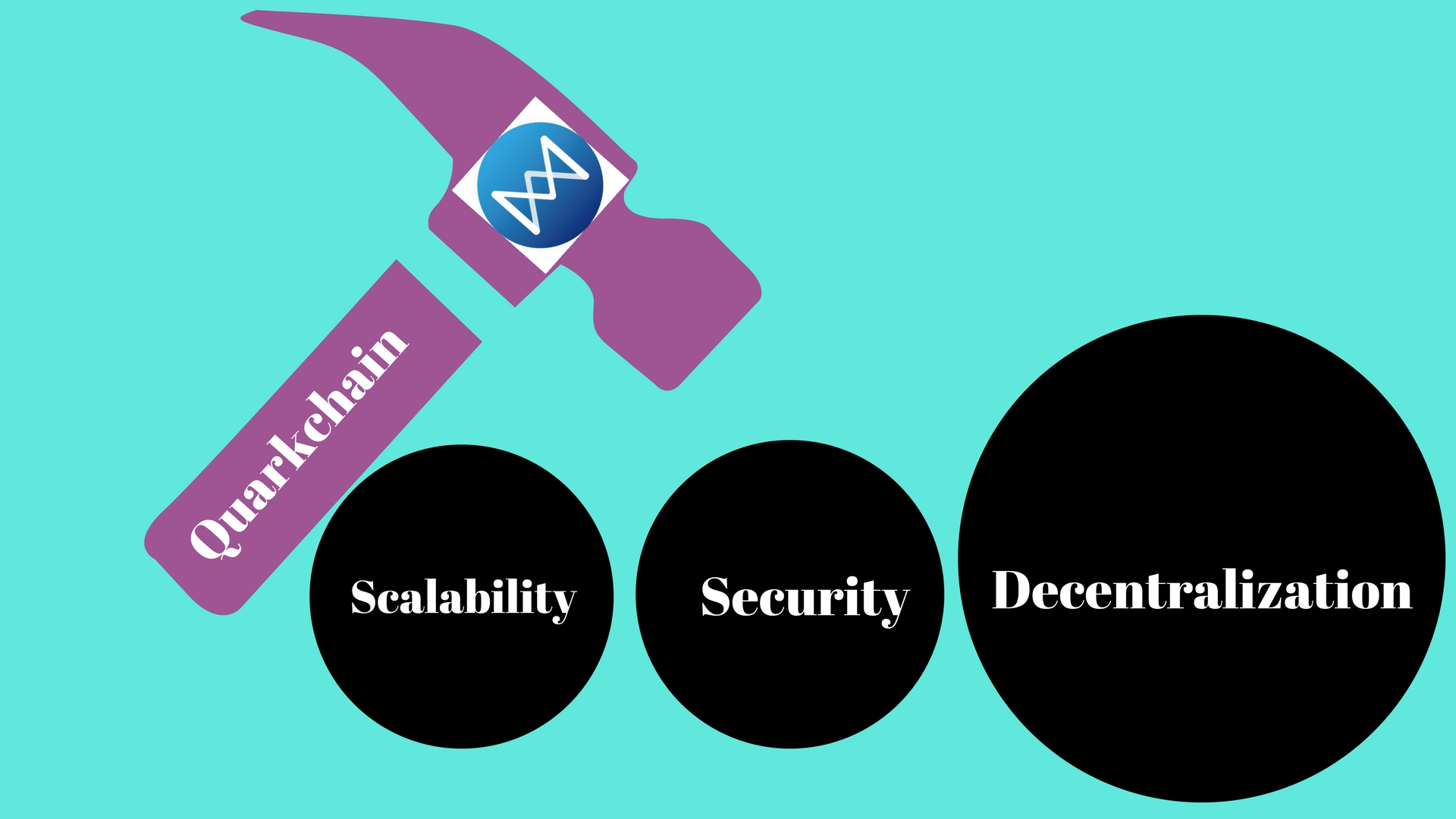First things first, do you know what ails blockchain technology most as of now? It’s not one or two, but three crucial issues, these are Scalability, Security, and Decentralization. But do you know who has been able to resolve all the above problems and how? That’s the key reason for this piece of article. Let’s further look into QuarkChain and what it entails.
.jpg)
What is Quarkchain
Quarkchain is decentralized,scalable, secure and permission less blockchain that aims to have 1 Million on chain TPS by applying sharding technology.
QuarkChain is a blockchain that utilizes sharding to provide a high capacity peer to peer transactional system. It comprises two primary layers, which are the Sharding layer and the Root layer. While the former layer allows for high throughput by way of efficiently distributing data, the latter serves to confirm the blocks of the first.
Attributes of QuarkChain
- Uses proof of work and supports GPU mining. (a long-tested proven consensus)
- As network size increase’s, the project will scale (TPS) as the number of nodes increase.
- Supports cross-shard transaction capability
- Avoids 51 percent attack, through delegation of the 50 percent or more, the hash power to the main root chain, to prevent double-spending attacks.
- Scalable to 1million TPS+
- Aims at supporting dAPP’s that require high transaction rate, and IoT Technology.
The Blockchain Dilemma/Trilemma regarding Scalability
The real challenge with blockchain scalability isn’t limited to getting the TPS up and growing, but attaining this while maintaining an acceptable level of decentralization and security for the blockchain. However, by using a two-layer blockchain, QuarkChain attempts to resolve this trilemma:
- The first layer having multiple elastic (flexible) blockchains acting as ‘shards.
- The second layer being a root blockchain that confirms the blocks, or preferably the block headers from the first layer.
While the second layer may be considered as the flagship to which all cruisers ask for directions or the Queen Ant in a colony of ants who all the ants must report to; the first layer may be construed as multiple Ethereums that are represented by each of the ‘sharded’ blockchains. This is because they individually represent separate EVM and smart contract system. Also, the first layer is considered elastic because the number of “sharded” blockchains in it can be increased or decreased as required.
While in the current testnet for QuarkChain, these ‘shards’ (mini-blockchains) reportedly clocked at 100 to 200 TPS, the founder Mr. Zhou claimed in an interview with BlockchainBrad that QuarkChain supports up to 2 billion shards. Nevertheless, in the short term, they are focused on first making it viable with thousands of shards.
Decentralization
So far as decentralization is concerned, QuarkChain has implemented quite a few innovative features that include ASIC-resistant PoW (Proof-of-work) algorithm, as a result of which QuarkChain can in effect operate as a hybrid PoW blockchain.
Collaborative Mining
QuarkChain will also be integrating a “Collaborative Mining” incentive mechanism, as a result of which miners will be encouraged to mine in accordance with their self-interested tendencies. However, the difference here is that this self-oriented reasoning will be theoretically aligned so that whatever they do will be good for everyone involved in the network.
Incidentally, the QuarkChain system is designed so that the miners are able to select and mine directly to any of the sharded blockchains, thereby providing very little or no incentives for joining mining pools, thus ensuring a higher level of decentralization.
Is QuarkChain better than other Blockchain?
Yes, QuarkChain is better than other blockchain like altcoins, BTC and the likes. These virtual assets is capable of bringing about improvement in efficiency in many sectors. Gaming, IOT and many other fields can be made faster through block chain, but there is a limitation. It has a low capacity to process data and transaction each second. If we made any attempt to increase their scale or capacity, it leads to a reduction in security and decentralization. It is a trade-off.
Comparison of Quarkchain and Zilliqa
Quarkchain's sharding system consists of 2 layered blockchains, where the first layer is sharded and the root chain confirms blocks from the sharding layer. This allows for quick cross-shard transactions, while also ensuring much higher security than other sharding solutions out there.
Zilliqa applies a swarm sharding principle, allowing it to easily scale, but at the cost of security of the blockchain itself (its still secure, but not as secure as quarkchain's model)Zilliqa's computational sharding approach relies on a new smart contract language that is not Turing-complete. Quarkchain supports evm natively.
Zilliqa supports network sharding, Quarkchain supports network and state sharding.
Great Info, Thank you
Downvoting a post can decrease pending rewards and make it less visible. Common reasons:
Submit
nice
Downvoting a post can decrease pending rewards and make it less visible. Common reasons:
Submit
It is a good writing.
Downvoting a post can decrease pending rewards and make it less visible. Common reasons:
Submit
ok
Downvoting a post can decrease pending rewards and make it less visible. Common reasons:
Submit